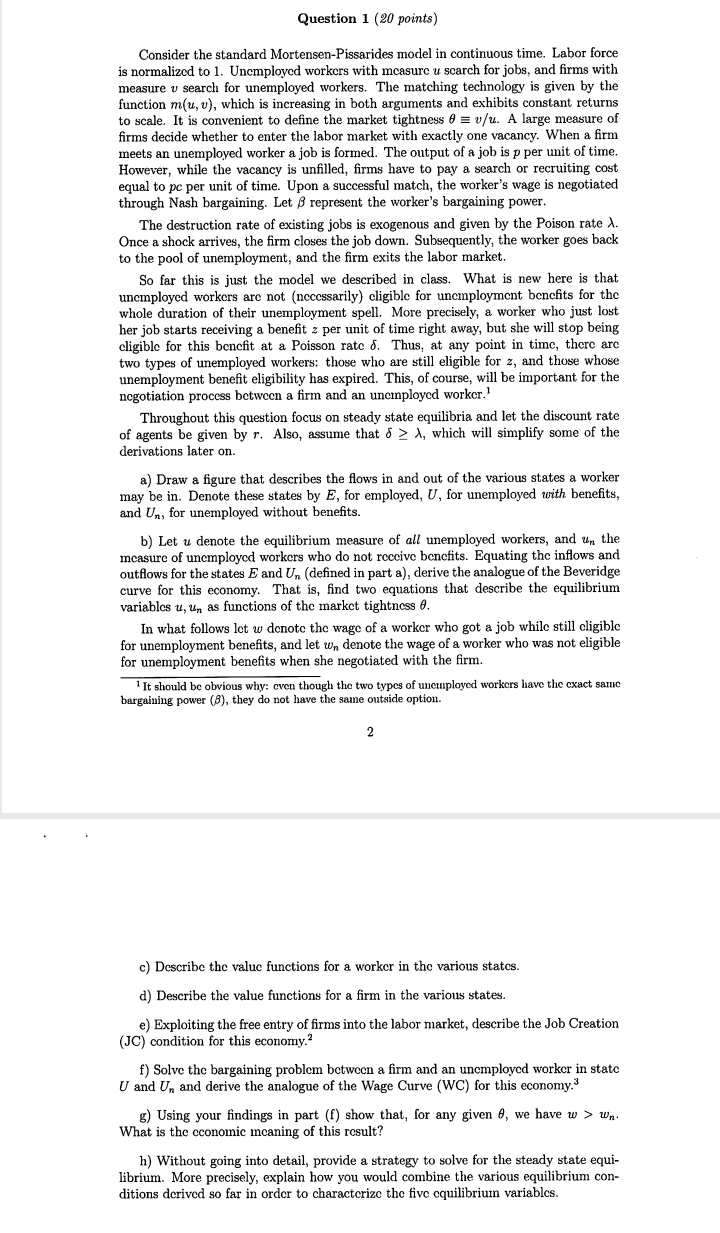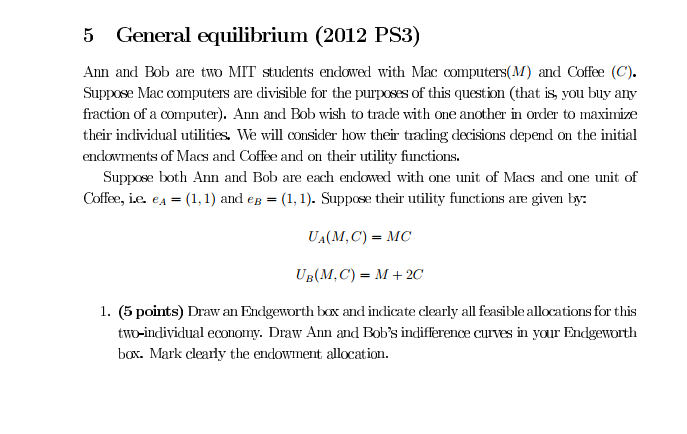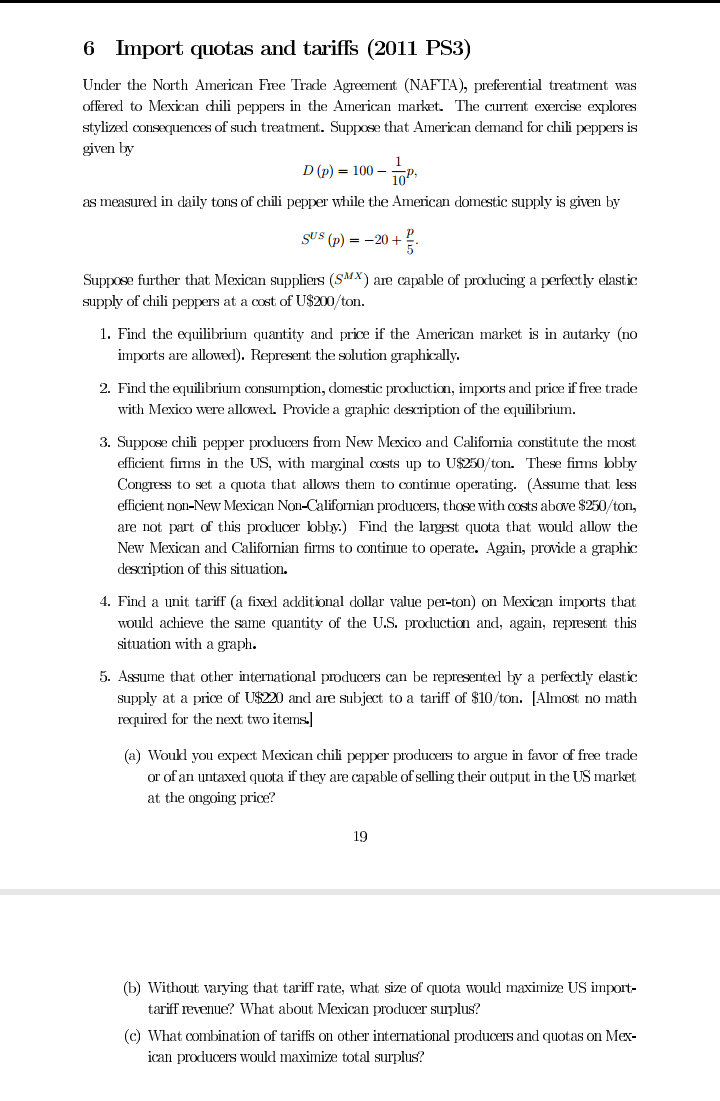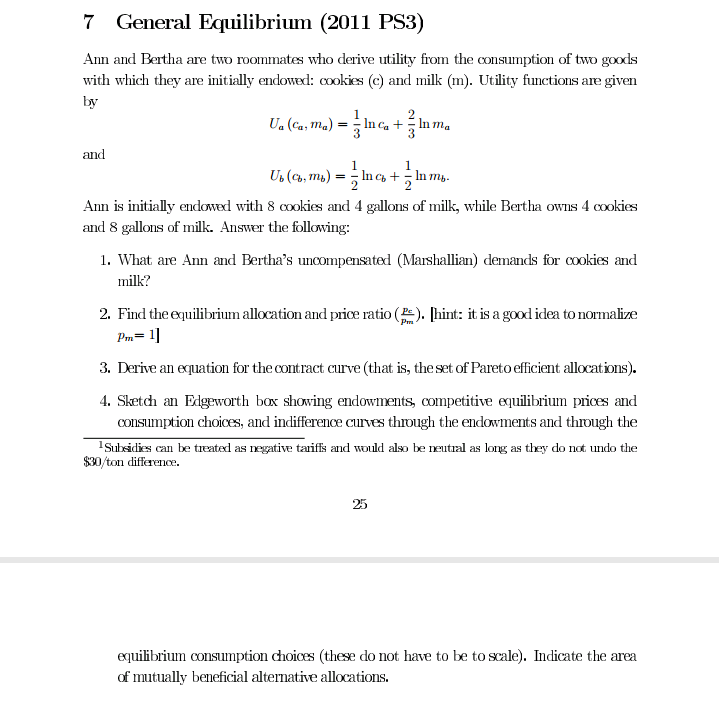





Answer the following questions correctly.pls
Question 1 (20 points) Consider the standard Mortensen-Pissarides model in continuous time. Labor force is normalized to 1. Unemployed workers with measure u search for jobs, and firms with measure v search for unemployed workers. The matching technology is given by the function m(u, v), which is increasing in both arguments and exhibits constant returns to scale. It is convenient to define the market tightness 0 = v/u. A large measure of firms decide whether to enter the labor market with exactly one vacancy. When a firm meets an unemployed worker a job is formed. The output of a job is p per unit of time. However, while the vacancy is unfilled, firms have to pay a search or recruiting cost equal to pc per unit of time. Upon a successful match, the worker's wage is negotiated through Nash bargaining. Let / represent the worker's bargaining power. The destruction rate of existing jobs is exogenous and given by the Poison rate A. Once a shock arrives, the firm closes the job down. Subsequently, the worker goes back to the pool of unemployment, and the firm exits the labor market. So far this is just the model we described in class. What is new here is that unemployed workers are not (necessarily) eligible for unemployment benefits for the whole duration of their unemployment spell. More precisely, a worker who just lost her job starts receiving a benefit z per unit of time right away, but she will stop being eligible for this benefit at a Poisson rate 6. Thus, at any point in time, there are two types of unemployed workers: those who are still eligible for z, and those whose unemployment benefit eligibility has expired. This, of course, will be important for the negotiation process between a firm and an uncinployed worker. Throughout this question focus on steady state equilibria and let the discount rate of agents be given by r. Also, assume that o 2 A, which will simplify some of the derivations later on. a) Draw a figure that describes the flows in and out of the various states a worker may be in. Denote these states by E, for employed, U, for unemployed with benefits, and Un, for unemployed without benefits. b) Let u denote the equilibrium measure of all unemployed workers, and un the measure of unemployed workers who do not receive benefits. Equating the inflows and outflows for the states E and Un (defined in part a), derive the analogue of the Beveridge curve for this economy. That is, find two equations that describe the equilibrium variables u, un as functions of the market tightness e. In what follows let w denote the wage of a worker who got a job while still cligible for unemployment benefits, and let w, denote the wage of a worker who was not eligible for unemployment benefits when she negotiated with the firm. It should be obvious why: even though the two types of unemployed workers have the exact same bargaining power (8), they do not have the same outside option. 2 c) Describe the value functions for a worker in the various states. d) Describe the value functions for a firm in the various states. e) Exploiting the free entry of firms into the labor market, describe the Job Creation (JC) condition for this economy." f) Solve the bargaining problem between a firm and an unemployed worker in state U and Un and derive the analogue of the Wage Curve (WC) for this economy. g) Using your findings in part (f) show that, for any given d, we have w > wn What is the economic meaning of this result? h) Without going into detail, provide a strategy to solve for the steady state equi- librium. More precisely, explain how you would combine the various equilibrium con- ditions derived so far in order to characterize the five equilibrium variables.5 General equilibrium (2012 PS3) Ann and Bob are two MIT students endowed with Mac computers(M) and Coffee (C). Suppose Mac computers are divisible for the purposes of this question (that is, you buy any fraction of a computer). Ann and Bob wish to trade with one another in order to maximize their individual utilities. We will consider how their trading decisions depend on the initial endowments of Macs and Coffee and on their utility functions. Suppose both Ann and Bob are each endowed with one unit of Macs and one unit of Coffee, ie. eA = (1, 1) and es = (1, 1). Suppose their utility functions are given by: UA(M, C) = MC UB(M. C) = M + 20 1. (5 points) Draw an Endgeworth box and indicate clearly all feasible allocations for this two-individual economy. Draw Ann and Bob's indifference curves in your Endgeworth box. Mark clearly the endowment allocation.Image by MIT OpenCourseWare. 2. (5 points) Find the set of Pareto Optimal Allocations in this economy (this is also known as the contract curve). Draw the contract curve in an Endgeworth box and explain its meaning.Therefore, the contract curve s given by: MA = 204 When CA


















